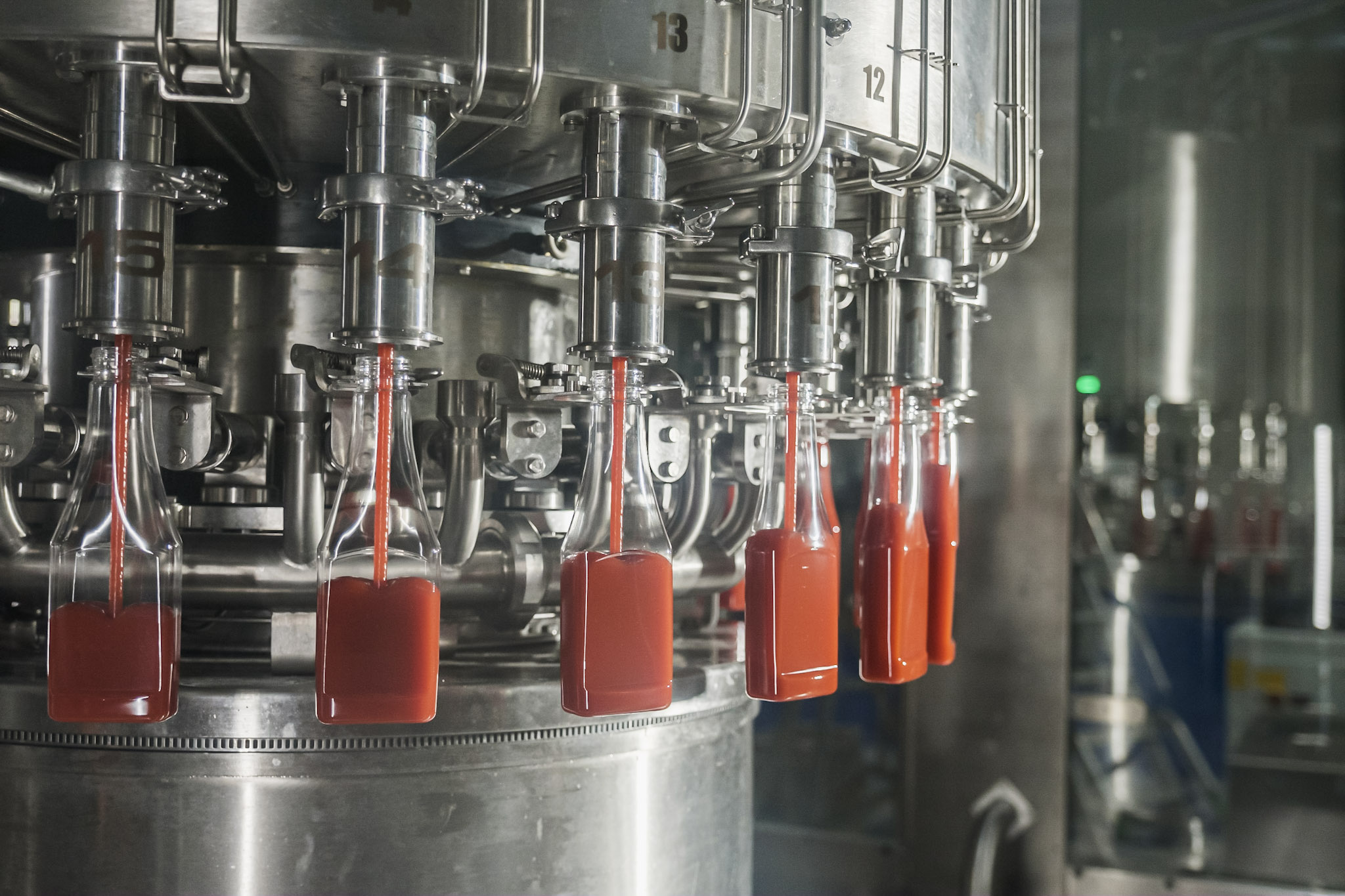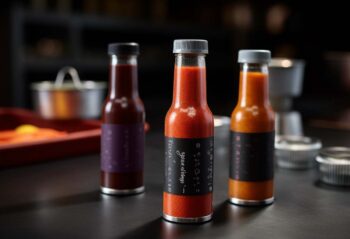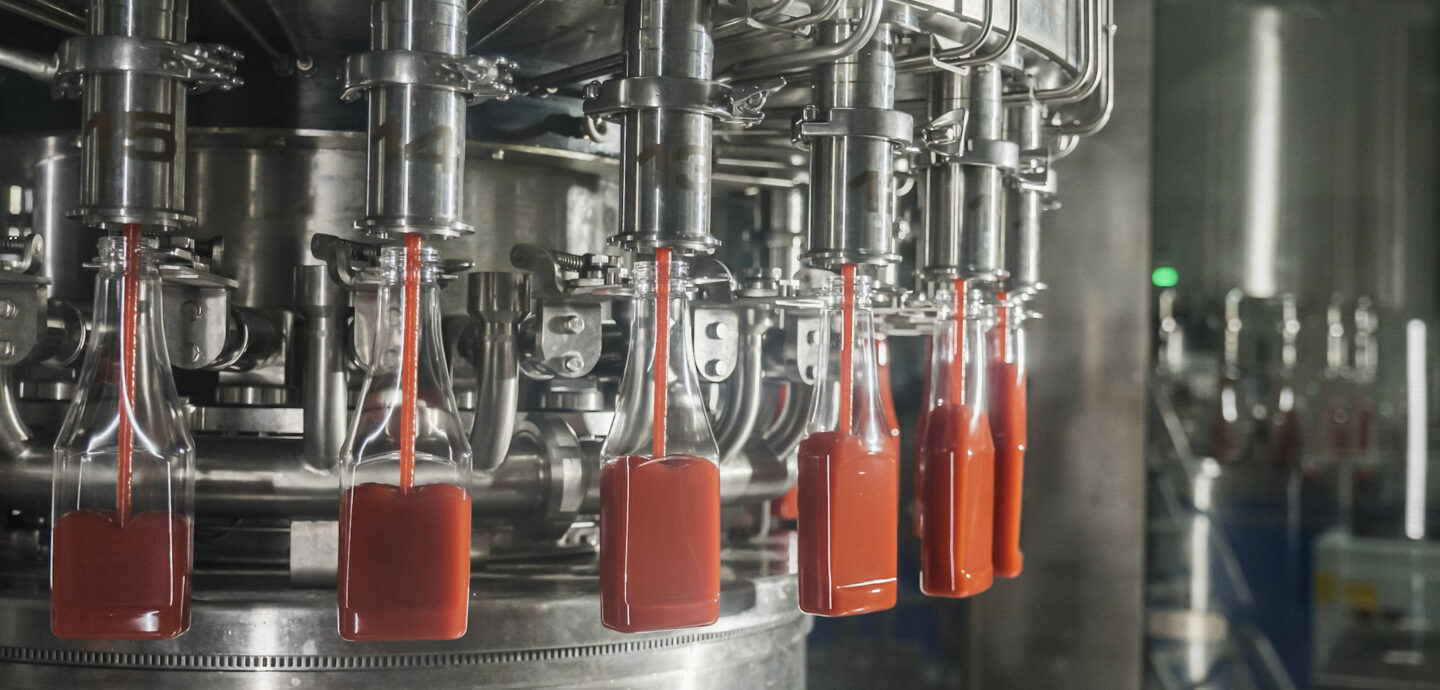
The complexity of light sauces
Traditional sauces, often rich in fat, offer a homogeneous texture that makes them easy to package. However, low-fat sauces are more delicate, not least because of their low fat content. Their tendency to separate or lose their homogeneous consistency under mechanical stress represents a major challenge.
Fat plays a crucial role in traditional sauces, not only in terms of taste but also texture. They contribute to emulsion stability, ensuring a smooth, creamy consistency. Reducing fat content in low-fat sauces compromises this stability, leading to phase separation or uneven consistency.
To counterbalance the reduced fat content, manufacturers often use emulsifiers, stabilizers or thickeners. However, finding the right balance between these ingredients is complex. Too little, and the sauce may separate; too much, and it may become too thick or develop an unpleasant texture.
The Benefits of Weigh Filling
Reduced mechanical forces:
One of the main advantages of weigh filling is the reduction of dynamic forces exerted on the sauce. By gently controlling the flow of sauce into the containers, this method minimizes the mechanical impact crucial for maintaining the homogeneity of low-fat sauces.
Maintaining Texture and Emulsion:
Smooth texture and stable emulsion are essential qualities for sauces. Weigh filling preserves these qualities throughout the packaging process, avoiding excessive turbulence that could alter the product’s structure.
Uniformity of the finished product:
Each bottle of sauce filled by this method contains a perfectly uniform quantity of product, which is crucial not only for the visual appearance but also for the consistency and quality of the product consumed.
“ Weigh filling technology relies mainly on gravity or slight overpressure for highly viscous products. Unlike volumetric filling, which forces the product through a dosing chamber, or flowmeter filling, which pressurizes the product to pass through narrow passages, weigh filling uses a gravimetric tank where the product is kept at a constant level to ensure a linear and regular flow, reducing viscosity loss. “
Density variations in low-fat sauces
Managing density variations is a fundamental aspect of sauce packaging, especially for low-fat sauces. These variations, influenced by various factors such as temperature, ingredients and the manufacturing process significantly impact the final product’s consistency.
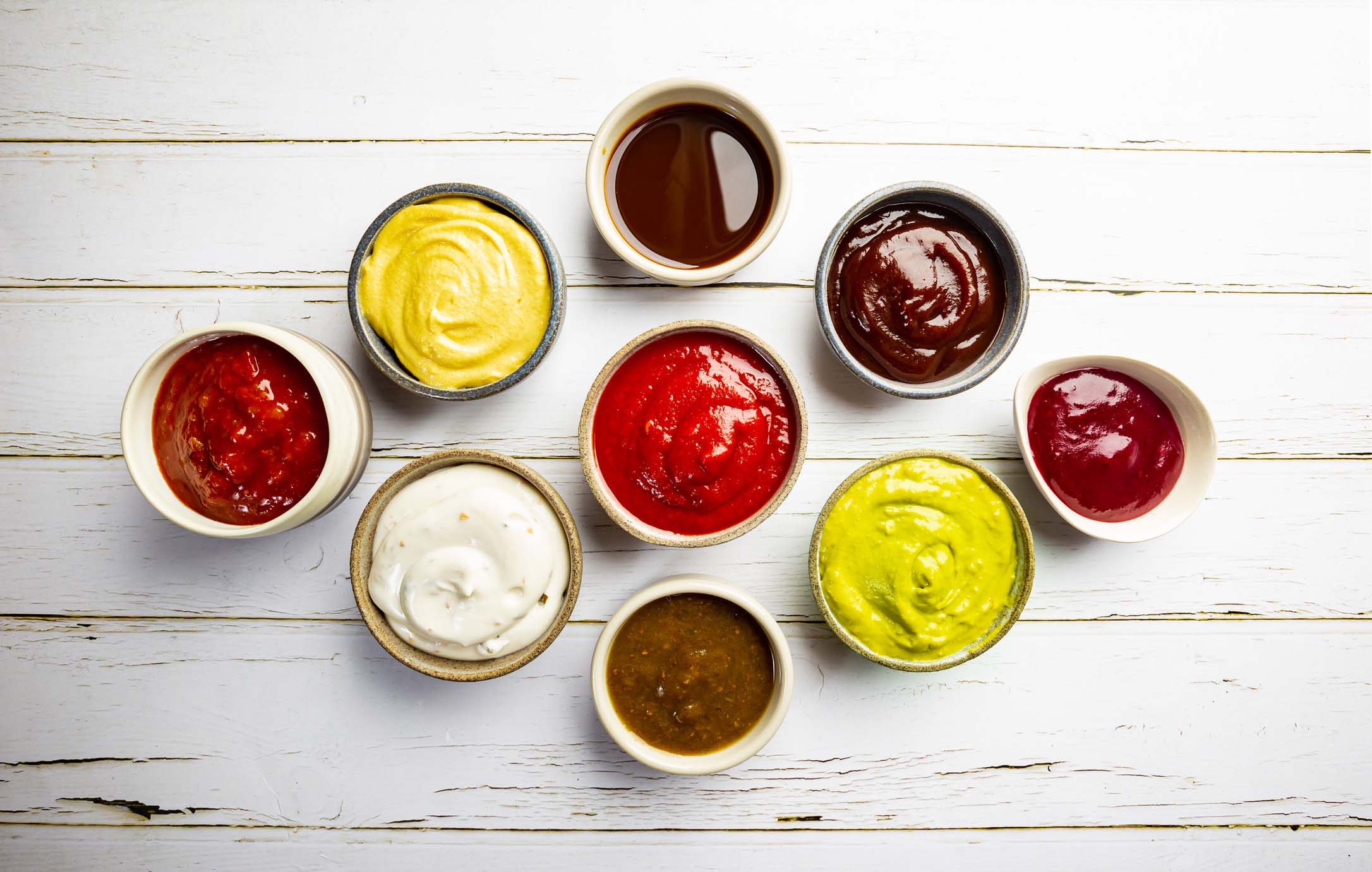
Influence of External Factors on Density
Temperature plays a major role in sauce density, causing it to expand or contract, which affects volume. Ingredients like thickeners and emulsifiers also alter density, and the manufacturing process, including mixing and homogenization, directly impacts the finished product’s density.
Density Variation Challenges
Density variations can lead to significant volume deviations during filling. If filling is based solely on volume, these deviations can lead to inconsistency in the quantity of finished product. This can result in under- or over-filling of containers, affecting not only economics but also consumer perception of quality.
Weigh Filling offers a solution to the problem of density variations in light sauces.
By measuring and dosing sauces by weight rather than volume, this method compensates for variations in density. Each bottle receives a quantity of sauce that corresponds exactly to the predefined weight, regardless of variations in product density.
Uniformity and precision
This approach guarantees remarkable uniformity in the amount of finished product. Whether sauces are thicker or thinner, each container will be filled with the same amount of product by weight, ensuring consistency and fairness for the consumer. This precision is crucial not only for customer satisfaction, but also for compliance with regulatory packaging standards.
Adaptability and flexibility
Weight filling is characterized by its great adaptability. The technology makes it possible to quickly adjust filling parameters to suit different types of sauce, offering great flexibility in production line management. This ability to adapt is essential if we are to respond effectively to the demands of an ever-changing food market.
In short, managing density variations through weight filling is a key component in modern sauce packaging. It not only ensures the precision and uniformity of the finished product, but also plays an important role in optimizing production and overall consumer satisfaction.
Impact on overall customer satisfaction
A consistent amount of product in each bottle contributes to a uniform, attractive presentation, an essential element in seducing the consumer. The smooth, homogenous texture of sauces, maintained by weight filling, also plays a crucial role in customer satisfaction. The visually appealing appearance of the bottles and the pleasant texture of the sauces together contribute to an overall satisfying experience for the consumer. This influences not only the decision to buy, but also the likelihood of repeat purchases.
“ Weigh filling is a key packaging technology, particularly well suited to the specific challenges of sauces, especially low-fat sauces. By guaranteeing precision, smooth filling and flexibility, this technology represents an appropriate solution that effectively meets the quality expectations of both the sauce industry and consumers. “
Our expertise
-
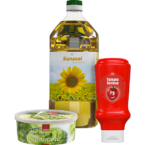 Read more ...
Read more ...Oils & Sauces
Pioneer in weight filling for liquid food on rotary machines since 1969 (glass, metal, rigid plastic), Serac is a leading ...




